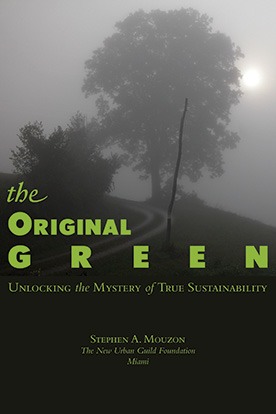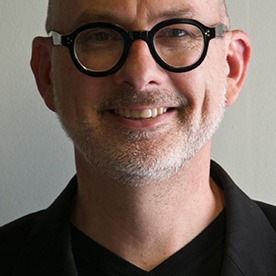
Millions of the best minds are working around the world today trying to figure out how we can live sustainably. Many of them have been working on this dilemma for years, yet almost every metric of sustainability continues to grow worse. So we’re still going backwards. But I’m an optimist, so I believe we will eventually figure it out. Once we have, then how do we spread the great wisdom of sustainability that took so many years and so many great minds to assemble? There are several candidates:
Architects must be heavily involved, because sustainability is inextricably intertwined with the places we work, live, and shop. So how does architecture spread ideas? Unfortunately, and far too often, it does not. This is because architecture has been saddled with a huge weight for nearly a hundred years: the necessity of uniqueness. By this standard, if you hope to be significant, you must be unique. Uniqueness dies a sudden death when someone copies your work, so significant architects are highly motivated to design by a code that is not easily cracked. And the copiers condemn themselves to non-uniqueness, which equates to insignificance.
“But wait,” you might ask. “What’s wrong with uniqueness?” “Doesn’t that standard encourage creativity?” “And creativity is good, right?” “Doesn’t sustainability require creative solutions?” It seems at first glance like the necessity of uniqueness might actually be a requirement for sustainability, but quite the opposite is true.
Think about this for a moment: if millions of the best minds around the world work for years to figure out the mysteries of true sustainability, how ridiculous would it be to expect each significant architect to reformulate sustainability in the image of their own personal style? Asking a single person to reformulate years of work by millions of the best minds goes beyond the absurd... to the globally treasonous! We must be allowed to share wisdom!!!
So if architecture’s current methods don’t work, what are the alternatives? Our system of higher education has continued to develop for centuries, and is very good. You come to class for years, work through countless problems and show your work, and you eventually get a degree or two... or three. But this system is not nearly broad enough. Just compare the proportion of PhDs to the population at large, and you’ll find that this system can only affect a small proportion of the population. Sustainability must be something that we all do, not something that only a few people do.
Nature has a better way of spreading great wisdom. The most complicated wisdom yet discovered by humanity is the human genome, which took legions of scientists many years to decode. Yet human genes are spread by billions of people with no genetic education and nothing but on-the-job training. How can this be?
Nature’s way of spreading human genes begins with attraction of one person to another. If they’re attracted enough to each other, they mate, they breed (not necessarily in that order) and they pass down their genetic material. What is the secret?
Look at the young woman in the image above, having lunch on the streets of Paris. Judging by appearances, one would have to say that she is quite likely to spread her genes because she is attractive. But she likely would tell you immediately that “there’s much more to me than just my appearance.” And she would be correct. Nature, you see, embeds wisdom (the genetic code) in beauty. People don’t have to know anything about the genetic code in order to spread it... they simply have to be attracted to a person with whom they want to spread it... and the code they are spreading is so much greater than the attraction that led them to that person to begin with.

Architecture once did something very similar. Someone might work for years to figure out the best possible eave for a region of the world, for example. They might do countless calculations of sun angles, storm winds, etc., and might do numerous experiments. But if they can then embed that wisdom in beauty by designing the eave in such a manner that the people of the region consider it to be beautiful, then nobody else needs to do the calculations, or the experiments, or show their work; they simply need to love the pattern. This embedding of wisdom within beauty is the beginning of a living tradition because it creates something that all the people can embrace.
Sustainability must engage the townspeople, not just the experts because there is only so much that the experts can do. Sustainability cannot be something that “they” do for us. Rather, sustainability must be characterized as “this is something I will do.” So sustainability actually requires living traditions. As a matter of fact, sustainability has never occurred without living traditions. Because only a living tradition has the power to spread wisdom so broadly using a vehicle so efficient as love. If it cannot be loved, it will not last. And if it will not last, it is not sustainable.
~ Steve Mouzon
Legacy Comments:
Tuesday, March 17, 2009 - 07:44 PM
Andrew Watt
I saw a house in Montague, MA this weekend that perfectly illustrated the problem you speak of here, contrasted with Gizmo Green. It was a lovely-shaped New England saltbox... but it was turned the wrong way, so it didn't receive the sun on its windows. In addition, a series of bizarre dormers had been added, in order to accommodate ELEVEN solar panels which were tacked onto the roof.
Dumb. And expensive
Wednesday, March 18, 2009 - 09:20 AM
Steve Mouzon
Amazing, isn't it, Andrew? You touch on two points here that we all need to be hammering home: sustainability begins with common sense, and it saves you money. Who shouldn't want both of those?
Saturday, April 25, 2009 - 11:03 AM
zephyr.hd
It'd very heartening to hear someone cite the human genome in the context of architecture. But that code isn't "open source" ,(yet) and can only be replicated by making a (cooperative) life-or-death decision to procreate with one particular individual or not. Since biotechies have already made replacement human bladders for those who have lost their original by culturing the client's bladder cells and then casting them onto a synthetic bladdereshaped scaffold, why not do this with trees. That is, grow a house (cultured tree cells cast into the shape of a room) that will grow into a dwelling. Green, Ruby Rod? Super green.
Tuesday, May 26, 2009 - 07:11 PM
Steve Mouzon
Zephyr, I'm confident we'll eventually be able to do things like that, and that could be really cool stuff, although it'll likely be horribly expensive at first, like anything new. Meanwhile, living traditions have spread wisdom sustainably for several millennia... so until the high-tech solutions arrive, I'm all for doing what is proven today.
Friday, July 17, 2009 - 08:22 PM
Fredo Valladares
If we could (or actually would) take the time to analize how other cultures and previous generations have lived and built as a result of their living experience, we would learn tthrough their traditional patterns that a lot has already been invented, tested, experienced, and it is only a matter of applying common sense to the concept of design.
Wednesday, July 29, 2009 - 10:36 AM
Steve Mouzon
Fredo, you're precisely right, IMO. Matter of fact, you've just laid out the entire premise of the Original Green in one sentence... thanks!
+593+


